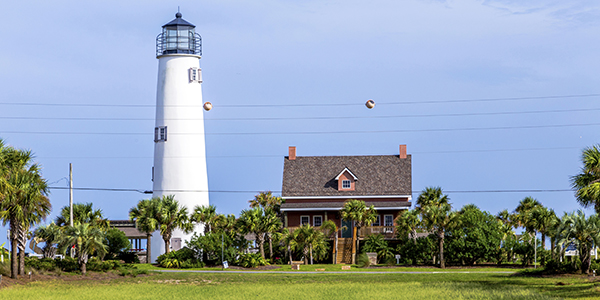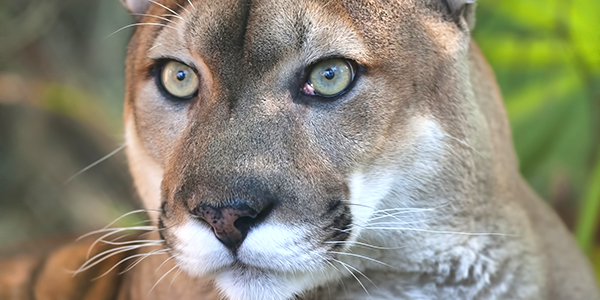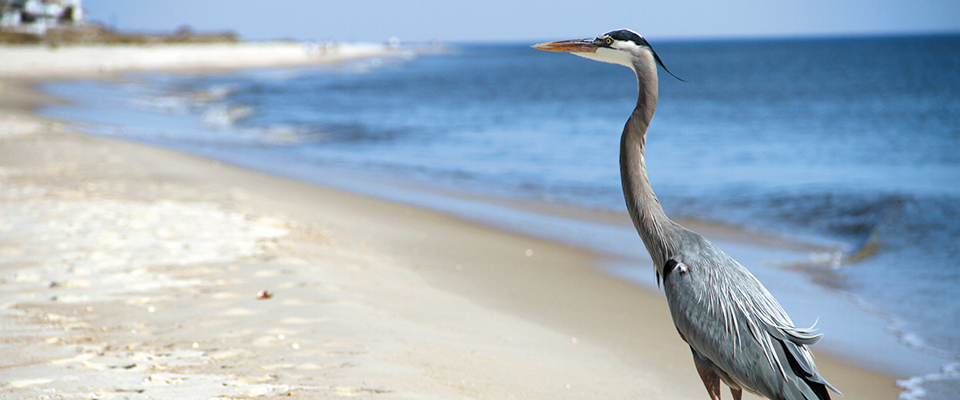Spotlight: Franklin County
Make memories in Florida’s so-called ‘Forgotten Coast’
The “Forgotten Coast” of Franklin County is a far cry from Florida’s magic kingdoms, glitzy beaches, strip malls and quests for eternal youth. In the Florida Panhandle, along the Gulf of Mexico, the 545-square-mile Franklin County is a haven for wildlife, an unassuming land that likes to keep Florida’s “best-kept secrets” all to itself.
Virtually 90 percent of the county falls under the rubric of protected parkland or nature preserve. The community’s mammal inventory includes black bears and the elusive Florida panther, while the region’s swamps, beaches and waterways entice passionate birdwatchers. Find fun in the form of canoeing along the 100 miles of the Apalachicola River’s swamp lands to hiking across pristine white sand beaches or reveling in the small town hospitality of the county’s rough diamond towns—Apalachicola, Carrabelle and St. George Island—Franklin is a flashback to sultry “Old Florida.”

Getty Images/iStockphoto
Small but Perfectly Formed
One of Franklin County’s most charming and eclectic towns, the fishing town of Apalachicola (known affectionately as Apalach) was founded by 19th-century cotton and lumber barons. The cobbled streets of the romantic historic district are dotted with hip bistros, arty cafés, eclectic stores and contemporary galleries that lend the town a poise and grace that feels more Nantucket than steamy Florida.
Shifting Sands
Franklin County’s 250 miles of magnificent beaches unfurl from Alligator Point to Apalachicola. The St. George Island, a 28-mile-long barrier island of pristine white sand, gently rolling surf, bay forests and salt marshes invite a wealth of recreation including shelling, kayaking, sailing, hiking and swimming. The nine-mile-long St. George Island State Park Beach ranks as the longest beachfront state park in Florida. St. George Island is also home to Cape St. George Lighthouse, a magnet for aspiring young mariners. At the easternmost end of St. Vincent Island, the castaway dreamscape of Tahiti Beach remains true to its name. Reminiscent of a Gauguin painting, this quintessential South Seas paradise can only be accessed by boat, which keeps the tourist footprint pleasingly light. Old Carrabelle beach’s magnificent stretch of pure white sand offers superb fishing, especially during the summer and fall. Bald Point State Park beach attracts naturalists with congregations of shorebirds and wading birds, including herons, egrets, American oystercatcher and sandpipers that feed on the shore, shallow water oyster beds and exposed bars.

Getty Images/iStockphoto
Wild at Heart
The largest of Florida’s three national forests, the Apalachicola National Forest occupies almost 938 square miles—more than half a million acres—of the Panhandle from just west of Tallahassee to the Apalachicola River. Scores of species find refuge in the park’s lowlands, pine and oak forests and cypress hammocks including gray and red foxes, coyotes, bats, minks, beavers, red cockaded woodpeckers, alligators, Florida black bears and the elusive Florida panther.
A pristine estuary that pulsates with wildlife, the 246,000 acres of the Apalachicola Bay National Estuarine Research Reserve (the second-largest estuarine research reserve system in the nation) has been deemed a “biological hotspot” due to its 1,300 species of plants, 131 species of fish and 50 species of mammals (including manatees).
For More Information
Florida Department of Tourism
888-735-2872
www.visitflorida.com





